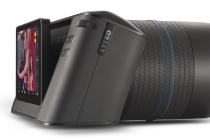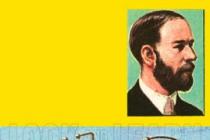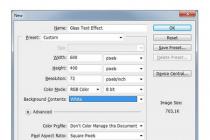Lytro Illum now allows you to capture 3D images and shots with variable depth of field and its width, and even slightly change the perspective of the resulting frames. The powerful Qualcomm Snapdragon 801 mobile processor (like the latest Android flagships) is responsible for the camera and image processing. Lytro Illum is based on a 1-inch sensor with a resolution of 40 "megabeams", its lens has a 9x optical zoom (FR range is 30-250 mm in 35 mm equivalent) with a constant aperture of f / 2.0. The camera's mechanical shutter allows shutter speeds up to 1/4000 second. The Lytro Illum also features a tiltable 4-inch touchscreen display.
The Lytro device uses a set of micro lenses between the primary lens and the image sensor. This system refracts light into thousands of individual light paths, which are stored by the sensor and the internal processor as one special file format (.lpf). Subsequently, the user can change the focus and implement various effects.
The Lytro Illum is equipped with a tilting touch screen and physical controls. Dimensions are 86x145x166 mm, weight - 940 g.
Marvel Distribution became the exclusive Russian distributor of the plenoptic camera Lytro ILLUM.
The Lytro ILLUM is the second and more advanced plenoptic camera introduced to the consumer market by the Californian company Lytro. The underlying technology for capturing light fields in these cameras differs significantly from traditional photographic technologies. The resolution of such cameras is measured by the number of beams. Shooting is carried out, as a rule, with a fully open aperture, and the aperture and fine focusing are made after the act of shooting itself.

In theory, this technology allows you to get flat and three-dimensional images with controlled sharpness and depth of field. This is ensured by a special design of the matrix, which, with the help of a system of microlenses, fixes the spatial characteristics of the images of the light rays entering the camera. Lytro ILLUM's CMOS sensor captures 40 million beams - 40 mega beams, sometimes referred to as "megarays" in English ray(Ray). True, the practical implementation of all these unusual advantages is still not perfect.

The camera shoots in a proprietary RAW format, which "understands" only proprietary software developed for Windows and Mac operating systems. With it, the user can select the desired focus plane, select aperture, convert files to traditional JPEG or TIFF graphic formats, create animations and convert them to video files.
The manufacturer calls the plenoptic images taken with the camera “living pictures” and provides a space-gallery on its website for storing them. Viewing such "live photos" using interactive features such as selecting the focus point is possible through Internet-connected computers, tablets, smartphones. A special code allows you to embed such images in your websites and blogs (similar to how YouTube or Vimeo videos are embedded).

Theoretically, such a camera could be of interest for a very wide range of applications, at least for the most part associated with online use. Advertising, sports, landscape, architecture, weddings - the ability to interactively control sharpness can open up new dimensions in these and other areas.
An example of a high-field photo from the Lytro corporate gallery. Author: HansonFong-RudyPollack.
The photo is inserted in the branded player; select the desired focus point with the cursor, zoom with the mouse wheel.
However, when this technology is translated into the traditional planar framework of ordinary photography, many of its advantages are inevitably lost. An ordinary JPEG-file or print loses its interactivity and, of course, has pre-selected sharpness and depth of field, and 40 mega-rays recorded by the matrix turn into 4 mega-pixels; this is quite a lot for virtual use, but not always enough for material images.
In the history of photography, there were many original and even revolutionary solutions: Kodak disk, APS film format (from which only the designations of the sizes of non-full-frame matrices remained), the Foveon multilayer matrix (cameras with such matrices have been produced by the Japanese Sigma for quite a long time, but they are still in high demand). and did not). Whether the technology of the light field, used in science for the second century, will become a new revolution in mass photographic equipment, which will turn the market over like the digital revolution did, we'll have to wait and see.
Specifications Lytro ILLUM
| Class | Plenoptic digital camera (light field camera) |
| Matrix | Lytro Light Field CMOS Matrix, size 10.82 × 7.52 mm, 40 mega beams (7728 × 5368) |
| Viewfinder | - |
| Applicable optics | Fixed lens 9.5-77.8 (30-250 equiv.) mm f/2.0 |
| Photo Format | Light Field Picture (.lpf) |
| Resolution of converted photos of regular formats | 2450×1634 |
| Light sensitivity | ISO 80-3200 |
| Shutter speed range | 1/4000-32s |
| Focusing | Automatic, manual |
| Flash | - (has a hot shoe for matched flashes) |
| Video | - |
| Screen | Touch, 4" (102 mm), 384K dots (480 × 800) |
| Memory | 1 SD card slot |
| Communication and interfaces | WiFi, USB 3.0 |
| Nutrition | Li-ion battery |
| Dimensions and weight | 145×86×166mm 940 g (body only), 1030 g (with battery) |
First camera from Lytro opened the world of light field photography for us, the second generation camera opens the door to this world wide open. New camera Lytro Illum no longer looks like a toy, it already looks like a full-fledged camera for a wide audience. Not only the design has undergone an update, now the camera is equipped with serious optics, the size of the matrix has been increased and a new processor has been installed.

What is so special about this camera?
The light field camera, introduced by Lytro two years ago, seriously shook the established notion of photography in general. An amazing matrix in a small oblong box could capture millions of rays of light, with information about their color, intensity and direction. Prior to this, such a trick could only be done by putting together a hundred cameras and a supercomputer. Here, with one click on the button, you can not only get a 3D image, but you can also select the focus point AFTER shooting. And it is this second feature that most strongly distinguishes Lytro cameras from the rest.
It's 2014 and already some smartphones can imitate such functionality using cunning software methods. For example, the Nokia Refocus application takes several shots in a row with different depth of field, and then you can already get the desired result. Other smartphones, such as the LG G2 Pro and Samsung Galaxy S5, simply blur the image area outside the selected point. In principle, many Android 4.4 smartphones can simulate bokeh using the LensBlur feature built into the native camera app.
But Lytro is not going to give up. On the contrary, the heads of the company admit that they are pleasantly flattered that their technology is taken as a role model by the giants of modern electronics.
A little about the lens
By and large, refocusing after shooting is far from the only advantage of light field photography over traditional photography. Light field photography allows you to capture the most complete information about the frame, the most complete of all that was available before. In fact, this is a digitization of a region of space, and the resulting image depends not so much on the characteristics of the camera, but on software processing.

What does it mean? Take for example a lens for a Canon DSLR, with a focal length range of 70-200mm, it has 22 optical elements. The lens of the Illum camera with an effective range of focal lengths of 30-250mm and a constant aperture of f / 2 contains only 13 optical elements. The same Canon lens with a full frame camera like the EOS-1Dx would weigh over 3kg. What about Illum? Approximately 600 grams. And all because in conventional DSLRs a lot of optics are used to correct aberrations. It is necessary to carefully distribute the image on the surface of the matrix to get the correct image. Instead, the Lytro matrix data can be used to programmatically calculate the direction of the light beam.
The Illum camera lens is smaller, lighter, has a huge focal range and fast aperture. The work that glasses have always had to do is now solved programmatically. Analogs to this lens for traditional cameras simply do not exist.
Design

But what about design? And everything is in order! The sleek design of the Lytro Illum looks like it was drawn by fashion designers in Paris. The refined, stylish lines of the metal body blend into the luxurious shapes of the anodized aluminum lens. The zoom and focus rings and the handle are rubberized for a secure grip. On top of the body is a large shutter button. Next to it is a special button for hinting the depth of field. In addition to these buttons, the camera is controlled by a pair of dials for setting exposure and ISO values, buttons for fixing the AF point and autoexposure, as well as a pair of programmable buttons.
The standard flash connector is compatible with most external flashes.
On the left side of the case, there is a slot for memory cards and a USB3.0 connector. Illum has built-in WiFi to wirelessly transfer footage to a network or iOS device.

Why does a camera that can focus after shooting need a focus ring? Well, it all depends on the depth of field, since the differences between the foreground and background may not be very noticeable. If you turn on the depth of field hint, then the foreground and background are marked in green and orange on the screen.

Screen
Speaking of the screen, the 4” touch screen is amazing. Most DSLRs are not very friendly to beginners, they have a bunch of buttons, wheels, levers that are not clear why they are needed at all. Lytro decided to take the control of smartphone cameras as a model and created a very simple control interface for the Illum camera. All that is required is to indicate the autofocus point on the touch screen and set other settings to taste. By the time it enters the market, the interface will still be finalized, but it’s already very easy to adjust the horizon, the grid on the screen, switch the shooting mode, set the timer, select automatic shooting mode or semi-automatic, with shutter or aperture priority, advanced users can also use fully manual mode.
The screen is slightly tilted, so it is convenient to look at it when shooting “from the hip”. Many people are used to shooting at eye level, but the developers believe that shooting at hip level is the most natural way. If desired, the angle of the screen can be changed, but unfortunately not enough to make a self-portrait.

Hardware stuffing
The heart of the camera is a large matrix with a resolution of 40 mega-rays, i.е. with its help, you can capture information about 40 million rays of light (in the first model there were only 11 mega-rays). thus the resolution of the new camera is significantly higher than the previous one, refocusing is more accurate.
The Illum's mechanical shutter is capable of shutter speeds up to 1/4000th of a second, making the camera suitable for sports photography.
The lens has decent macro capabilities, you can shoot the nose of a Labrador, look at the pores on it or the seams on jeans, but you never know how many applications for macro photography exist.
All this is controlled by the most productive mobile processor at the moment, the Qualcomm Snapdragon 800.
All images are saved in the same light field format as before, and you will have to use Lytro software to process them. Everything here is the same as before, you can save 3D images, you can change the focus point on an already finished image, and even now you can change the depth of field. The picture can then be exported to Lightroom, Photoshop or Aperture.
Light field photography is not just about taking good pictures, it is a new facet of photography. Now it is possible to create an animation of the light field, reviving a frozen moment.
Conclusion
Illum's target audience ranges from "creative trailblazers" who are inspired by new features and want to try a new way of shooting, to people who are already experienced in photography, but the ease of use and capabilities of the new camera should definitely appeal to curious newcomers.
The Lytro Illum will go on sale July 15 with a starting price of $1,599. It seems to be expensive, but on the other hand, a professional camera with decent optics is much more expensive.
Lytro Illum is a camera and software platform based on Light Field technology that allows you to change the way you view the reality around you. Lytro Illum takes full advantage of light field technology and gives photographers the unique ability to communicate their vision of the world as interactive shots rather than a static slice of reality. As the name suggests, the Lytro Illum V2 is the second camera of its kind to be released by Lytro. If the first camera, released in 2012, was unprepossessing, had modest technical characteristics and looked more like a bar that did not look like a camera at all, then the new model has an attractive futuristic design that easily guesses the traditional features of mirrorless cameras.

Unlike conventional digital cameras, the Lytro Illum records light field information, including light direction data. Until recently, it was possible to work with the light field only in research laboratories. For this, a large number of cameras connected to a supercomputer were used. However, Lytro researchers and engineers have been able to realize the potential of this technology in a compact camera.
A radical new approach to capturing data provides unprecedented opportunities, such as changing the focus point, perspective and aperture value of an already finished photograph, as well as viewing it in 3D. Lytro Illum expands the creative arsenal of photographers. It allows you to tell stories and capture memorable moments in a whole new way, surprising your friends, family and clients with interactive shots.
At the heart of the camera is a 40-megabeam sensor made up of thousands of microlenses that refract and reflect light, breaking it up into many individual light paths that the sensor and camera processor then write into a single file. The resulting image is saved in a special format that is incompatible with any existing graphic editor, so the manufacturer provides the camera with special software for working with the resulting images.
Consider the technical specifications of Lytro Illum:
| Sensor | 40-megabeam, CMOS type, |
| Lens | non-replaceable, 8x optical zoom, analogue of focal lengths 30-250 mm, constant aperture F / 2 |
| CPU | Qualcomm Snapdragon 800 |
| Light sensitivity | ISO 80 - 3200 |
| Exposure control | TTL metering: matrix, area, spot |
| Shooting Format | 3:2 (2450x1634), about 4 megapixels |
| Governing bodies | on/off button, shutter button, Lytro button, zoom control (electronic ring), focus control (electronic ring), front and rear command dials, AE-L, AF, Light Field hyperfocal distance and special buttons, touch screen |
| Screen | 4-inch multi-touch touch screen, resolution 480x800, tilting, tilt angles from -10 to 80 degrees, automatic brightness control, viewing angle up to 160 degrees. |
| Shooting modes | P - program, I - ISO priority, S - shutter speed priority, M - manual |
| File formats | Lytro RAW, Lytro XRAW |
| Bracketing | exposure, focus |
| Gate | 32 - 1/4000s, X-sync with 1/250s |
| Minimum focusing distance | 0 cm |
| Self-timer | 2 / 10 s |
| Power supply | lithium-ion battery, 3.7V, 3760 mAh |
| Memory | 1 slot, SD/SDHC/SDXC memory cards |
| Frame | magnesium and aluminum alloys, silicone coating |
| hot shoe | There is |
| Connectors | USB 3.0 |
| WiFi | built-in module |
| Dimensions, weight | 166x145x86 mm, 940 g |
| Image storage | providing free storage of your photos on the Lytro website |
First of all, the focus should be on the lens: high aperture, typical for top products, and a constant aperture of F / 2. But due to the impossibility of reducing the aperture and the relatively high minimum shutter speed of 1/4000 s, shooting on a bright sunny day can be problematic. Therefore, the camera comes with a neutral density filter ND8 72 mm. It is worth mentioning the 8x optical zoom and a wide range of focal lengths from 30 to 250 mm. The zoom is impressive and quite capable of competing with many telephoto lenses, the focal lengths are universal and in demand for most shooting conditions, with the camera you can safely go to a reportage, to the street, to shoot portraits or to hunt in nature, except that in a number of situations there will be a lack of wide corner, but this is the price for convenience. The ISO values are low, but with a small sensor size, this is not surprising.
The bottom end contains the battery compartment and a threaded tripod mount. And the connectors for the memory card and USB cable are located on the left side of the camera under a long flap door. Perhaps this is the external examination should be completed. Much more interesting in the case of Lytro Illum is not how it looks, but how it works.
Hardware component
In the case of Lytro Illum, it is incorrect to talk about the resolution of the matrix. At least that's what the manufacturer says. Its resolution is 40 megarays (40 megarays, whatever that means), but the output can get a picture no larger than 2450x1634 - that's about four megapixels. The debut Lytro camera boasted a resolution of 1080x1080 pixels. The sensor itself has a size of 6.4x4.8 mm, and it is based on CMOS technology. However, here everything is a little more complicated than in a conventional camera.
Light Field technology records information about the intensity of scene lighting as well as the direction of the light. The Lytro sensor uses an array of microlenses in front of a conventional sensor (CMOS in this case) to distinguish information about light intensity, direction, and color. Firmware then converts this data into 2D or 3D images. Pictures are saved in the proprietary Lytro RAW format (in their original and compressed form), and each "weighs" about 55-60 megabytes. In the case of a conventional camera, a 40-megapixel shot in 14-bit RAW would take up so much space.
The sensitivity of the sensor is adjustable within ISO 80-3200. There is an auto-select feature that works quite well. The shutter speed range looks typical for a budget class camera - from 1/4000 to 32 seconds.
Now about the most unexpected: inside there is a Qualcomm 800 mobile processor. And for some reason, the manufacturer does not talk too much about the hardware platform. But it should be noted that the camera is rather slow, especially with regard to autofocus and view mode.
Continuous shooting is possible at 3 frames per second, but autofocus does not work in this case. Under normal conditions, the camera takes about a second to focus.
The display, as already mentioned, has an inclined design. This is a fairly high-quality 4-inch matrix with a resolution of 1,152,000 dots. Touch input is supported and works great. Well, with the "outside world" the camera can be connected via Wi-Fi or USB 3.0. There is a separate iOS application for it (which you can do without) the Lytro Desktop program for Windows and Mac (but it will be difficult to live without it).
And now about what is not in Lytro Illum. This is video footage. The camera does not know how to record videos in any form. But you can make a gluing of several photos during their processing.
Shooting, processing, publication
You cannot get a regular JPEG image directly from the camera. To do this, you need to use a proprietary application. Strictly speaking, without the Lytro software, you won't even be able to view the footage except on the camera screen. None of the third-party converters "understand" Lytro RAW, and this is unlikely to be fixed anytime soon.














